#theca
Text
Amy's bbc cuckold adventures 1
Enchnating diva with giant as face sitting unrepining dude
Sexy Asian brunette gets a big cock in her pussy from behind and fucked hard
Reality porno in session as pleasing piece of cookie rides dick
This Tinder girl likes to suck and get fucked from behind while watching porn.
Negrita linda
Quickie with my sexy asian
Indian Bhabhi Anklets with Sandals
Sex appeal round assed chick widens long legs wide open and feels how fat dick of pal begins entering her luscious loving gap from the behind
Suave metendo na novinha rabuda
#hick#ssoblr#Whitlam#genius#nonwrinkleable#wolflike#lazyhood#stoniness#yttriferous#umpire's#unbelievers#CIS#paraspy#behatted#byrri#Kingston-upon-Hull#cpunk#theca#Remmer#up-bow
0 notes
Text

From launchpad 71; song 9 out of 15 are recorded and ready for producing. (after all is) Said and Done by jackpott& theca$ino$……coming soon.
9 notes
·
View notes
Photo

I figured these two didn't have the wedding that they wanted, due to lack of funds and being on the run. So they eloped instead. In some ways, that's pretty romantic, and adrenaline fueled. Maybe Lightbug digs that. Consider this my Valentine's Day pic this year because I work that day, and I had an appointment today that didn't go so well and it made me feel pathetic.
#cuphead#moonshine mob#gangster spider#lightbug#like they would be outrunning theca's while on their way to their honeymoon
51 notes
·
View notes
Text
Pretty babes ass cumshot
FFM porn with two adorable teens
HOT BRUNETTE-CLOSE UP SENSUAL DILDO FUCK TO SQUIRTING ORGASMS
Slim Teen Huge Natural Tits
Old grandma teen gets fucked by man Old smart gentleman with a young
MOROCHA
Soldier Gets Gloryhole Servicing
She loves it nice and slow
Indian Girl boob pressing alone in room
Young gay amateurs make out before anal and cumshot
#sesamin#countertechnicality#tetramorphism#cabstand#Sinifying#copesman#diaphragmatically#Hand#theocrasies#storekeeping#pelt#copis#thester#novella#thecae#retimber#zaguan#schizogregarine#pinched#elaterite
0 notes
Text
It's too bad Halloween was yesterday because I would have done a Wet Beast Wednesday on something creepy, like the tongue-biting isopod. It's not though, so so I'm dipping my toes into echinoderm science and talking about crinoids. While crinoids are the least famous echinoderms, being overshadowed by their relatives the starfish, sea urchins, and sea cucumbers, they are extremely well-represented in the fossil record. We know of far more extinct crinoid species than living ones.
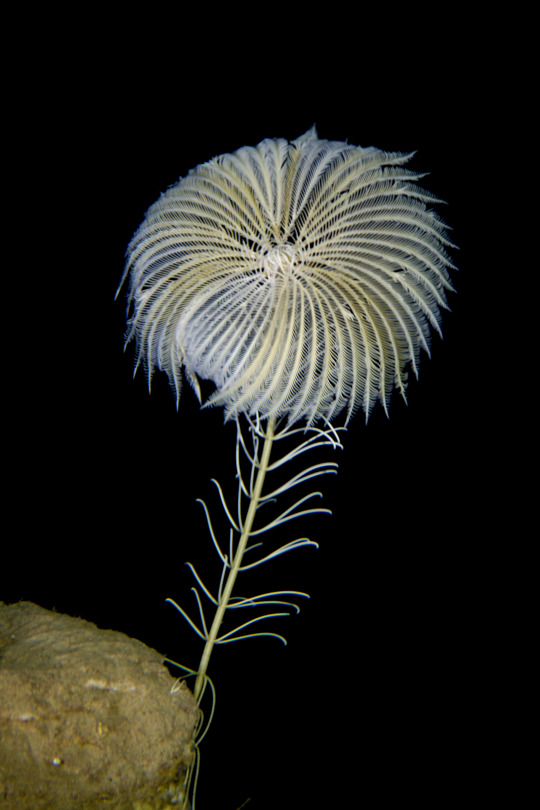
(imag id: a crinoid attached to a rock. It is a long, slender stalk with multiple threadlike protrusions emerging from it. At the top is a crown that looks like a flower composed of feathery appendages. It is while all over)
As with all echinoderms, crinoids are bilaterally symmetrical as larvae for become radially symmetrical while adults. It is hypothesized that the ancestor of all echinoderms was a bilaterally symmetrical animal that evolved to become radially symmetrical as adults. This places echinoderms in the same clade as all other bilaterally symmetrical animals, including mollusks, arthropods, most worms, and all vertebrates. You are more closely related to a starfish than a starfish is to a jellyfish. Crinoids are one of those animals like anemones that look more like flowers than animals, which is why they're also called sea lilies. A typical juvenile crinoid consists of a stalk with a holdfast on one end and crown on the other. The stalk is segmented and made of porous calcified material called ossicles, which are attached to each other by discs. This is the part of a crinoid that fossilizes most easily and a great many crinoid fossils are only known from their stems. The holdfast is a root-like structure that attaches the crinoid to a substrate. Crinoids that attach to a hard surface have a branching holdfast to grip on while crinoids that attach to sediment have a thick, stalk-like holdfast that penetrates into the substrate like a tree's taproot. The crown is the part that looks like a flower and consists of two parts: the theca/calyx/arboral cup and the rays. The theca is shaped like a cup and has a mouth in the center. The mouth connects to a simple u-shaped gut that leads to an anus near the mouth. The rays are analogous to the arms of a starfish. All echinoderms have 5 symmetrical body segments and crinoids have five rays, though they usually branch after emerging from the theca, resulting in up to a few hundred total rays. The rays are segmented like the stalk and can curl up. Crinoids will curl up their arms and pull them in to protect them. The rays are used in feeding. Crinoids are passive suspension feeders that wait for plankton and organic particles to be carried into the rays by the current. Each ray is covered by flexible appendages called pinnules that give the rays a feathery appearance. Each pinnule is covered by tube feet that are coated in sticky mucus. When a food particle hits the tube feet, they grab on and transfer it to the center of the ray, which contains a canal called the ambulacral groove. The groove is filled with cilia that carry the food particle down to the mouth. All crinoids take this form during their juvenile phase, but only a few modern species retain it for their entire lives. Most modern species will shift into an adult form where the stalk falls off and the theca becomes free-swimming. These are often called feather stars. Both stalked crinoids and feather stars can use their rays to pull themselves along the substrate, but feather stars can also wave their rays around to swim. Swimming allows feather stars to more readily avoid danger and become more active in their attempts to catch food.

(image: a diagram of crinoid anatomy. source)
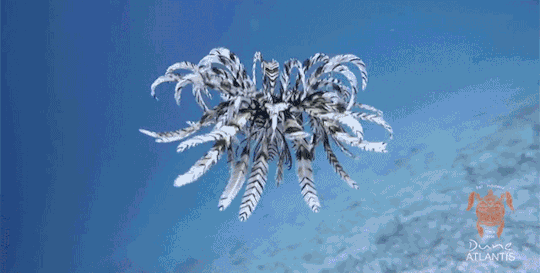
(gif id: a feather star swimming. It looks like a bunch of black-and-white striped feathers attached to a central disc. The arms are undulating, propelling the feather star through the water)
Crinoids are dioecious, meaning individuals are either male or female. In most species, the gonads are in the pinnules closest to the theca. The gonads actually swell up and cause the pinnules to burst and release the gametes. Different species have different strategies. In some, both sperm and eggs will be released into the water column. In others, only the males broadcast sperm which the females use to fertilize their eggs. The eggs are withheld by the mother, either by gluing them to her arms or incubated in sacs on the arms. The larvae, called vitellaria, are free-swimming and bilaterally symmetrical. They will swim for a few days before dropping to the substrate and attaching. They then metamorphose into juveniles.

(image: a diagram showing a crinoid progressing through multiple developmental stages from fertilized egg to larva. source)
The fossil history of crinoids dates back to the Ordovician period (485-444 million years ago), the period between the Cambrian and Silurian. While echinoderms and even stalked echinoderms existed during the Cambrian, the oldest definitive crinoid fossils are Ordovician and it's unclear which extinct group that crinoids evolved from. For over two hundred million years, crinoids were extremely diverse and were dominant sessile filter feeders, beating out anemones and corals. The mass extinction at the end of the Permian dealt a major blow to crinoids that they never recovered from, causing them to lose their dominance and become much less morphologically diverse. The Permian mass extinction is a fascinating period of history as it was the single greatest mass extinction in the history of Earth. The early Triassic saw a mass adaptation to more flexible and motile body plans in response to increased predation. It's not clear when feather stars entered the picture, though they may have come about due to predation in the Triassic. Some extinct crinoids had different survival strategies than modern ones. The genus Pentacrinites attached themselves to driftwood and floated through the open ocean. They would have been like floating islands of diversity moving through the oceans with lots of other animals following for food and shelter. A fact that gets passed around a lot is that the largest fossil crinoid ever found (Taxocrinus saratogensis) was 40 meters (130 ft) long. That isn't true and seems to stem from a misprint. It was actually 40 ft (12.2 m) long, which is still fucking enormous. Crinoids today don't get anywhere near as large as extinct ones could. Fossil crinoids measuring many meters in stem length are well documented while ones alive today never even reach a meter long. Crinoid fossils are extremely common and can be used to provide relative dates to nearby fossils. In some places, enough crinoid parts fossilized near each other that they became clustered together in sedimentary rocks called encrinites.

(image id: a fossil imprint of many crinoids attached to a piece of driftwood. The imprints ore in a flat, tan rock. The driftwood imprint looks like a long, dark blob. The crinoids have long, curved, and overlapping stems and fan-like crowns at the top. Fossil found at the Houston Museum of Natural Science)
#wet beast wednesday#crinoid#sea lily#feather star#echinoderm#paleontology#marine biology#biology#zoology#ecology#invertebrate
158 notes
·
View notes
Text

“Inti”
Shamanic Sun Worship
Sun Worship
Much Inca architecture was designed and built to assist in the worship of the Sun, Moon and stars. The Inca often built pillars which marked the position of the Sun at the solstices, which were celebrated by grand festivals. The Inca lords would preside at such festivals. In the great temple of the Sun, a high-ranking Inca woman – generally the sister of the reigning Inca, if one were available – was in charge of the cloistered women who served as the Sun’s “wives.” The priests observed holy days such as solstices and prepared the appropriate sacrifices and offerings.
Eclipses
Theca could not predict solar eclipses, and when one occurred, it tended to trouble them greatly. The diviners would attempt to figure out why Inti was displeased, and sacrifices would be offered. The Inca rarely practiced human sacrifice, but an eclipse sometimes was considered cause to do so. The reigning Inca would often fast for days after an eclipse and withdraw from public duties.
Inti Raymi
One of the most important religious events of the Inca was Inti Ramyi, the annual festival of the sun. It took place in the seventh month of the Inca Calendar on June 20 or 21, the date of the Summer Solstice. Inti Raymi was celebrated all over the Empire, but the main celebration took place in Cuzco, where the reigning Inca would preside over the ceremonies and festivities. It opened with the sacrifice of 100 llamas selected for brown fur. The festival lasted for several days. Statues of the Sun God and other gods were brought out, dressed up and paraded around and sacrifices were made to them. There was much drinking, singing and dancing. Special statues were made of wood, representing certain gods: these were burned at the end of the festival. After the festival, the ashes of the statues and sacrifices were brought to a special place on a hillside: only those disposing of these ashes were ever allowed to go there.
Inca Sun Worship
The Inca Sun god was relatively benign: he was not destructive or violent like some Aztec Sun Gods like Tonatiuh or Tezcatlipoca. He only showed his wrath when there was an eclipse, at which point the Inca priests would sacrifice people and animals to appease him.
The Spanish priests considered Sun Worship to be pagan at best (and thinly-disguised Devil worship at worst) and went to great lengths to stamp it out. Temples were destroyed, idols burned, festivals forbade. It is a grim testament to their zeal that very few Andeans practice any sort of traditional religion today.
Most of the great Inca goldwork at the Cuzco Temple of the Sun and elsewhere found its way into the melting fires of the Spanish conquistadors - countless artistic and cultural treasures were melted down and shipped to Spain. Father Bernabé Cobo tells the story of one Spanish soldier named Manso Serra who was awarded a massive Inca sun idol as his share of Atahualpa's Ransom. Serra lost the idol gambling and its eventual fate is unknown.
Inti is enjoying a bit of a comeback lately. After centuries of being forgotten, Inti Raymi is once more being celebrated in Cuzco and other parts of the former Inca Empire. The festival is popular among native Andeans, who see it as a way to reclaim their lost heritage, and tourists, who enjoy the colorful dancers.
19 notes
·
View notes
Text
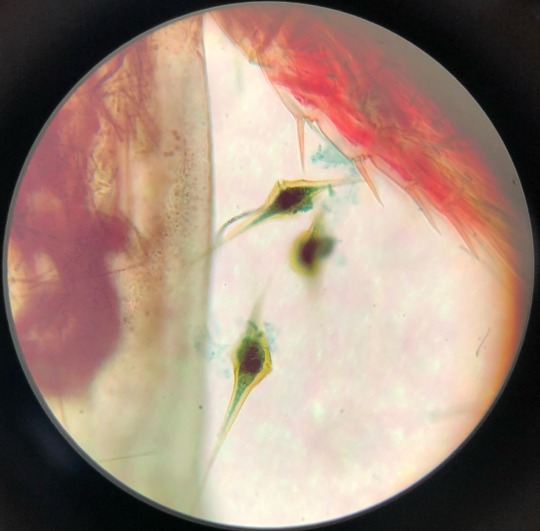
some dynophyta under a microscope! and some dynophyta fun facts:
dynophyta have cellulosic plates, called theca, that act as a protective layer for the cell
there’s a groove between the theca along the “waist” of the cell (girdle groove) and a groove between the theca on the end of the cell (trailing groove)
they have flagella in the grooves that allow this protist to be mobile
114 notes
·
View notes
Text
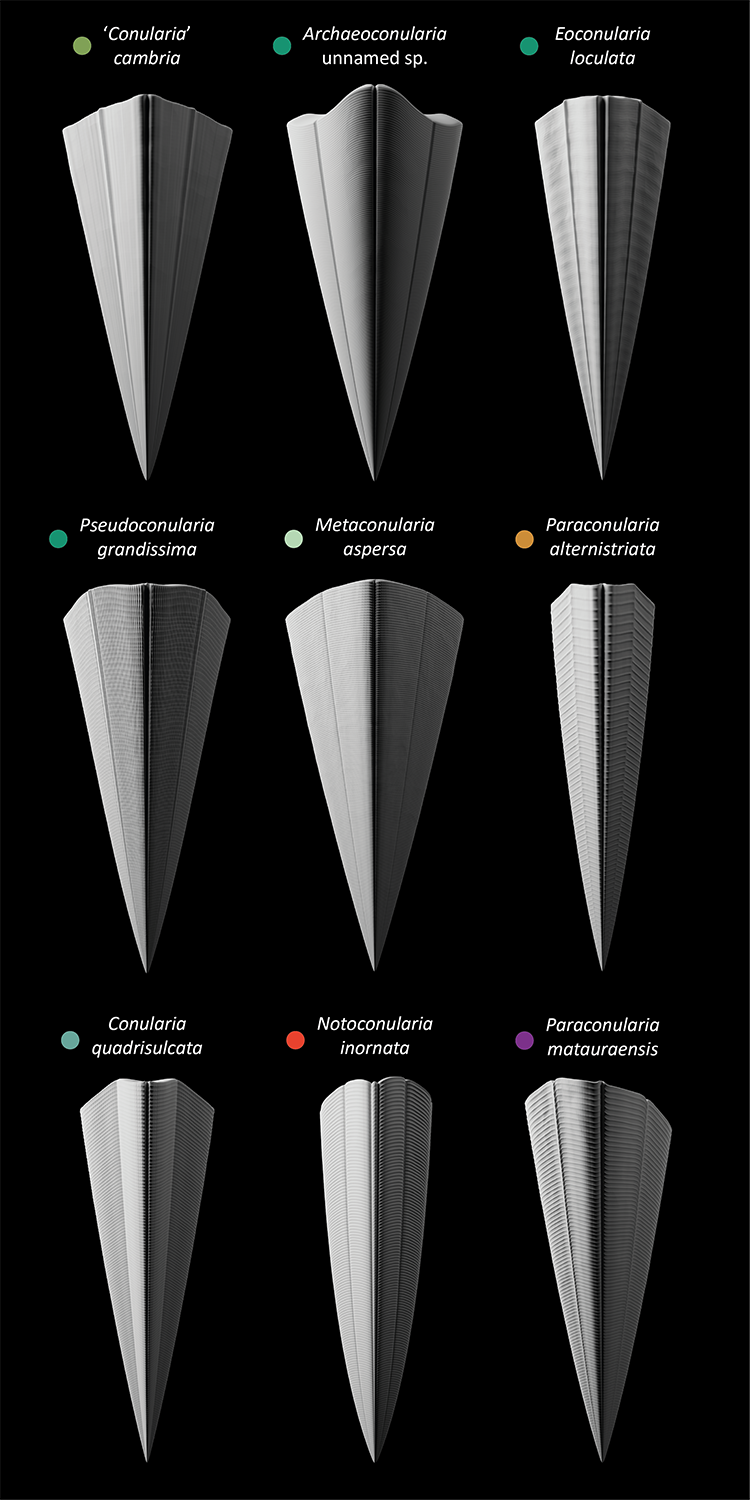
Conulariids are an extinct group of probable cnidarians with 4-sided pyramidal thecae. They are relatively uncommon fossils but ranged from the Cambrian (possibly Ediacaran?) to the Triassic, comprising tens of genera and hundreds of described species (Lucas 2012).
Here are the reconstructed thecae of a small selection of species from every period of the conulariids' range, starting from the Cambrian in the top left and reaching all the way to the Triassic in the bottom right.
Since their soft parts are virtually never preserved (due to them being cnidarians and all that) (Van Iten & Südkamp 2010), most of our knowledge of conulariid biology and evolution is based on their more fossil-friendly thecae, which were composed of thin organophosphatic lamellae (Leme et al. 2008). Live conulariids were attached to the substrate by the apex of their theca; they probably captured suspended food particles or small prey using tentacles, just like other cnidarians, but it's hard to go in any more (non-speculative) detail without preserved soft tissues.
References:
Babcock, L. E. (1986). Devonian and Mississippian conulariids of North America. Part B. Paraconularia, Reticulaconularia, new genus, and organisms rejected from Conulariida. Annals of the Carnegie Museum, 55, 411–479. https://doi.org/10.5962/p.215204
Guimarães Simões, M., Coelho Rodrigues, S., Moraes Leme, J. de, & Van Iten, H. (2003). Some Middle Paleozoic Conulariids (Cnidaria) as Possible Examples of Taphonomic Artifacts. Journal of Taphonomy, 1(3), 163–184.
Hughes, N. C., Gunderson, G. O., & Weedon, M. J. (2000). Late Cambrian Conulariids from Wisconsin and Minnesota. Journal of Paleontology, 74(5), 828–838. https://doi.org/10.1666/0022-3360(2000)074<;0828:LCCFWA>2.0.CO;2
John, D. L., Hughes, N. C., Galaviz, M. I., Gunderson, G. O., & Meyer, R. (2010). Unusually preserved Metaconularia manni (Roy, 1935) from the Silurian of Iowa, and the systematics of the genus. Journal of Paleontology, 84(1), 1–31. https://doi.org/10.1666/09-025.1
Leme, J. M., Simões, M. G., Marques, A. C., & Van Iten, H. (2008). Cladistic Analysis of the Suborder Conulariina Miller and Gurley, 1896 (cnidaria, Scyphozoa; Vendian–Triassic). Palaeontology, 51(3), 649–662. https://doi.org/10.1111/j.1475-4983.2008.00775.x
Lucas, S. (2012). The Extinction of the Conulariids. Geosciences, 2, 1–10. https://doi.org/10.3390/geosciences2010001
Sendino, C., & Zagorsek, K. (2011). The Aperture and Its Closure in an Ordovician Conulariid. Acta Palaeontologica Polonica, 56, 659–663. https://doi.org/10.4202/app.2010.0028
Slater, I. L. (1907). A monograph of British Conulariæ. Printed for the Palæontographical Society.
Thomas, G. A. (1969). Notoconularia, a New Conularid Genus from the Permian of Eastern Australia. Journal of Paleontology, 43(5), 1283–1290.
Van Iten, H., Konate, M., & Moussa, Y. (2008). Conulariids of the Upper Talak Formation (Mississipian, Visean) of Northern Niger (West Africa). Journal of Paleontology, 82(1), 192–196. https://doi.org/10.1666/06-083.1
Van Iten, H., Muir, L., Simões, M. G., Leme, J. M., Marques, A. C., & Yoder, N. (2016). Palaeobiogeography, palaeoecology and evolution of Lower Ordovician conulariids and Sphenothallus (Medusozoa, Cnidaria), with emphasis on the Fezouata Shale of southeastern Morocco. Palaeogeography, Palaeoclimatology, Palaeoecology, 460, 170–178. https://doi.org/10.1016/j.palaeo.2016.03.008
Van Iten, H., & Südkamp, W. H. (2010). Exceptionally preserved conulariids and an edrioasteroid from the Hunsrück Slate (Lower Devonian, SW Germany). Palaeontology, 53(2), 403–414. https://doi.org/10.1111/j.1475-4983.2010.00942.x
Waterhouse, J. B. (1979). Permian and Triassic conulariid species from New Zealand. Journal of the Royal Society of New Zealand, 9(4), 475–489. https://doi.org/10.1080/03036758.1979.10421833
敏郎杉山. (1942). 156. 日本産Conularidaの研究. 日本古生物学會報告・紀事, 1942(25), 185-194_1. https://doi.org/10.14825/prpsj1935.1942.185
#conularia#archaeoconularia#eoconularia#pseudoconularia#metaconularia#paraconularia#notoconularia#conulariid#cnidarian#paleozoic#mesozoic#palaeoblr#paleoart#my art
38 notes
·
View notes
Text
Thecaternum
[ pt: Thecaternum ]

[ID: a rectangular flag with 7 horizontal lines. sizes in this order from top to bottom: medium, thin, medium, thin, medium, thin, medium. colors in this order from top to bottom: dark red-brown, grey-red, grey, pale yellow, grey, grey-red, dark red-brown. End ID]
requested by @asher-makes-art
Thecaternum: an alterhuman term for when one's alterhuman identity is like a library with everything organized into different categories, but because of different reasons there are characters / concepts / species / etc out of place. So one keeps putting them in different sections until one feels like they are right, but they continue finding more out of place.
Etymology: "(byblio)theca", latin for library, "(ae)ternum", latin for forever
@radiomogai , @imawanokiwaaa

[ID: a pink line divider with a pink and purple sun in the middle. End ID]
40 notes
·
View notes
Text

Jack doesn’t wish to brag but dang!
(after all is) Said and Done
Coming soon.
11 notes
·
View notes
Text
Reproduction among these organisms is asexual by binary fission, during which the diatom divides into two parts, producing two "new" diatoms with identical genes. Each new organism receives one of the two frustules – one larger, the other smaller – possessed by the parent, which is now called the epitheca; and is used to construct a second, smaller frustule, the hypotheca. The diatom that received the larger frustule becomes the same size as its parent, but the diatom that received the smaller frustule remains smaller than its parent. This causes the average cell size of this diatom population to decrease.[15] It has been observed, however, that certain taxa have the ability to divide without causing a reduction in cell size.[58] Nonetheless, in order to restore the cell size of a diatom population for those that do endure size reduction, sexual reproduction and auxospore formation must occur.[15]
Vegetative cells of diatoms are diploid (2N) and so meiosis can take place, producing male and female gametes which then fuse to form the zygote. The zygote sheds its silica theca and grows into a large sphere covered by an organic membrane, the auxospore. A new diatom cell of maximum size, the initial cell, forms within the auxospore thus beginning a new generation.
14 notes
·
View notes
Text
What Are Corals
Almost all corals are colonial organisms. This means that they are composed of hundreds to hundreds of thousands of individual animals, called polyps. Each polyp has a stomach that opens at only one end. This opening, called the mouth, is surrounded by a circle of tentacles. The polyp uses these tentacles for defense, to capture small animals for food, and to clear away debris. Food enters the stomach through the mouth. After the food is consumed, waste products are expelled through the same opening.
Most corals feed at night. To capture their food, corals use stinging cells called nematocysts. These cells are located in the coral polyp’s tentacles and outer tissues.
Polyps Up Close:
Most corals are made up of hundreds of thousands of individual polyps like this one. Many stony coral polyps range in size from one to three millimeters in diameter. Anatomically simple organisms, much of the polyp's body is taken up by a stomach filled with digestive filaments. Open at only one end, the polyp takes in food and expels waste through its mouth. A ring of tentacles surrounding the mouth aids in capturing food, expelling waste and clearing away debris. Most food is captured with the help of special stinging cells called nematocysts which are inside the polyp' outer tissues, which is called the epidermis. Calcium carbonate is secreted by reef-building polyps and forms a protective cup called a calyx within which the polyps sits. The base of the calyx upon which the polyp sits is called the basal plate. The walls surrounding the calyx are called the theca. The coenosarc is a thin band of living tissue that connect individual polyps to one another and help make it a colonial organism.
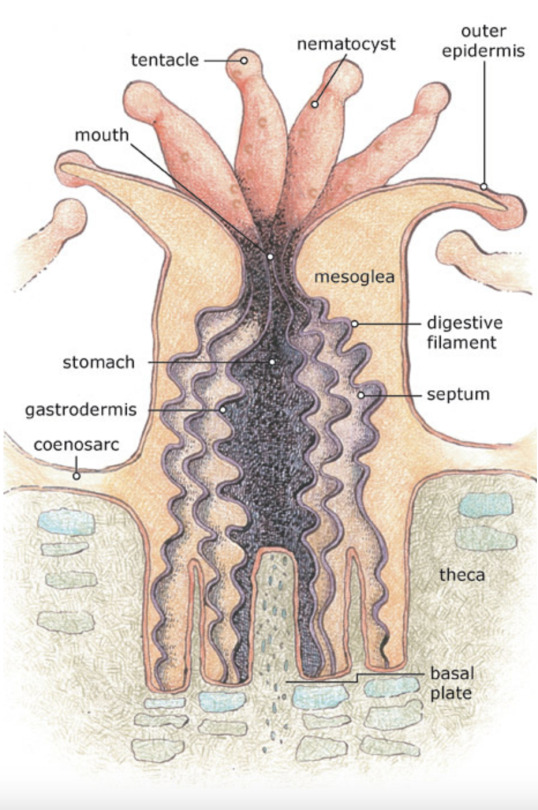
Reference:
2 notes
·
View notes
Note
More pathfinder bloodborne setting lore please?
Okay, so. This campaign is set in the city of Theca, which ages ago collapsed into a mile-deep sinkhole and was rebuilt on the resulting landslide. The city now lies inside a massive underground cave system. The only area with natural sunlight is the city center.

Theca’s waters are host to a form of bioluminescent algae with magical, occult properties. The algae see use in a variety of purposes both practical and esoteric! Different strains of algae have different properties, and all strains distill into a variety of liquids, collectively called Deepwine. Unfortunately, imbibing Deepwine infects people with a disease known as Deepsick- The algae warps bodies into monstrous forms evocative of marine life.

Most survive the illness, but it leaves their forms changed forever, and many are incapable of returning to their normal ways of life. A few are overtaken by the strain Deepsick puts on the mind and subsequently rampage through their hometown. This is enough of a problem in Theca that a form of freelancer known as a Hunter exists to handle monsters in the city, including rogue citizens. Many Hunters are themselves infected with Deepsick, forced into dangerous work against their neighbors, as no other job will take them. Our story follows four such Hunters as they handle cases related to Deepsick and struggle to keep their own lives afloat, against rent, illness, and the city’s deadly inertia.
...So there you have the gist of it!
71 notes
·
View notes
Text
Mod 4 General Topics
Subclass Prototheria
Primitive, oviparous mammals.
Has a single order, Monotremata.
Confined to the Australia region.
Ex: Platypus and Spiny Anteater.
Has reptilian, avian, and mammalian affinities along with some other peculiar characters.
Reptilian affinities: Presence of Cloaca, Body temp. not constant, can withstand starvation for a long period, and eggs are large with a leathery shell
Avian affinities: Shape of platypus beak resembles a duck bill, teeth are absent and feet are webbed.
Mammalian affinities: Body covered in hair, skin richly glandular, a typical mammalian diaphragm divided the body cavity, heart 4-chambered, and presence of milk glands secreting milk.
Peculiar characters: Presence of tarsal spurs in male, milk glands derived from sweat glands and without teats, temporary abdominal marsupial pouch in female during breeding season, and the right ovary is smaller and usually functionless.
Dentition in Mammals
Arrangement of teeth in vertebrae is termed dentition, teeth are most specialized in mammals.
Teeth play an important role in everyday life of animals. They
1. Grasp and hold prey or food in the mouth cavity
2. Serve as a grinding mill for chewing food.
3. Serve as weapons for offence or defense to tear organs.
I. Shape of Teeth: teeth can be differentiated into homodont or heterodont.
Homodont teeth are all similar in shape and size, common in vertebrate other than mammals.
Heterodont teeth are dissimilar in shape and size. They are distinguished into several types such as incisors, canines, premolars, and molars. The differentiation depends on the nature of food eaten and the manner of securing it.
II. Attachment of Teeth: The manner of attachment of teeth at the bases with the jaw bones varies.
Acrodont: Teeth are attached to the free surface or summit of the jaw bone. Can break easily but also are replaced. Ex: shark
Pleurodont: Teeth are attached to the inner side of jaw bone by their base and well as one side. Ex: lizard
Both of the above are rootless, nerves and blood vessels enter the pulp cavity along the lateral side.
Thecodont: Teeth have well developed roots implanted in deep individual pits called theca in the jaw bone. Ex: mammals
III. Succession of Teeth: According to their permanence or succession:
Polyphyodont: Teeth can be replaced an indefinite number of times during their life. Ex: Lower vertebrates
Diphyodont: Teeth develop in two successive sets, common in mammals.
The first set are called milk teeth, they erupt after birth in most but in bats they form and shed before birth. Milk dentition has no molars.
Milk teeth are later replaced with permanent teeth which last throughout life. Can't be replaced if lost. Anteaters have more milk teeth than perm.
Monophyodont: Only one set of teeth develops, found in some mammals like platypus.
IV. Kinds of Teeth: 4 types, incisors, canines, premolar, molars.
Incisors: The front teeth which are borne by the premaxillae in upper jaw and tips of dentaries in lower jaw. They are single-rooted, monocuspid and long, curved and sharp-edged. They are adapted for seizing, cutting and biting
Canines: A single canine tooth occurs in each half of each jaw, just outside the incisors. Upper canines are the first teeth on maxillae. Canines are generally elongated, single rooted and with a conical sharp monocuspid crown. They are
meant for piercing, tearing, offence, and defence.
Cheek Teeth: includes both premolars and molars. Their crowns have broad surfaces with ridges and tubercles meant for crushing, grinding and chewing.
Premolars: usually have two roots and two cusps and are represented in milk dentition.
Molars: generally have more than two roots and several cusps, do not have milk predecessors.
V. Dental Formula:
The number of teeth varies in different
species. However, enough teeth are constant and characteristic for every species of mammals. Therefore the number of teeth in a species can be represented by an equation called the dental formula.
Since two halves of each jaw are identical, only the teeth of one side are recorded. Those of the upper and lower jaws are separated by a horizontal line.
Kinds of teeth are denoted by their initial letters: i, c, pm and m. Number of
teeth shown in the formula multiplied by 2 gives the total number of teeth in a species.
Examples below

VI. Structure of Teeth
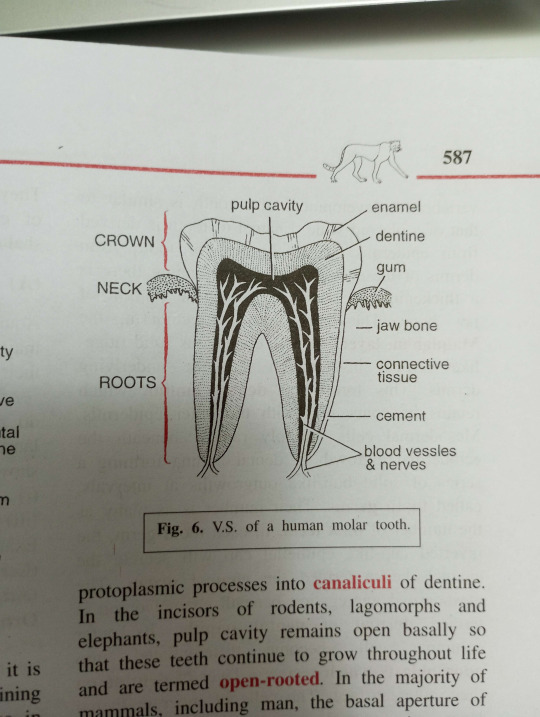
Aquatic Adaptations in Mammals
Mammals are primarily terrestrial animals, but some of them have secondarily adopted an aquatic mode of life. All of them still breath air though lungs.
Some have reverted to water because of extreme competition for food and shelter on land.
Aquatic adaptations fall into 3 main categories: modification of original structure, loss of structure, and development of new structure.
Modification of Original Structure:
1. Body Shape: Their external bodies have adapted into a fish like form with an elongated head, indistinct neck, and a tapering streamlined body which offers little resistance and swims rapidly.
2. Large size and weight: The larger size reduces skin friction and heat loss, but creates no problem for support in water due to buoyancy.
3. Flippers: Forelimbs are transformed into skin-covered unjointed flippers which have no separate fingers, they can move as a whole at the shoulder joint. Flippers serve as balancer and provide stability.
4. Hyperdactyly: Extra digits, up to 14 or more, serve to enlarge the surface area of the flipper for greater utility when swimming.
5. High and Valvular nostrils: Nostrils are placed far back on the top of the head so the animal can breath hair without having to raise it's head out of water too much. They can also be closed by valves as they dive.
6. Mammary ducts: During lactation, ducts of mammary glands dilate to form large reservoirs of milk which are pumped directly into the mouth of young by the action of a special compressor muscle. This allows suckling of young underwater.
7. Oblique diaphragm: An oblique diaphragm makes the thoracic cavity larger, dorsal, and barrel shaped, providing more space for lungs to expand.
8. Large lungs: Large and highly elastic lungs ensure taking in the maximum amount of air in before diving down. Like swim bladders in fish, the dorsal lungs also serve to maintaining a horizontal posture while swimming.
Loss of Structures:
Most hair is lost with the exception of some sensory hairs on snout or lips. Pinnae absent too. Both may obstruct the even flow of water over body surface and interfere with the speed and elegance of movement through water.
Eye cleansing nictitating membranes, lacrimal glands, and every other kinda of skin glands are absent because they are useless under water.
Skin loses its muscles and nerves due to thickening and immobility.
Hindlimbs are only represented in fetus as little nobs, disappear in adults.
Pelvis is rudimentary.
Fingernails are absent but present as traces in fetus.
Scrotal sacs are absent as testes remain inside the abdomen.
Development of New Structures:
1. Tail flukes: the tail develops large, lateral or horizontal expansions of skin called flukes. They are not supported by fin rays. Their up and down stroke both propel the body in water and help in rapid return to the surface.
2. Dorsal fin: An unpaired adipose dorsal fin without skeletal support, serves as a rudder or keel.
3. Blubber: The thick subcutaneous layer of fat. It compensates for the lack of hair by acting as a heat insulator. It also provides a ready reservoir of food and water during emergency. The fat also reduces the gravity of the animal and imparts buoyancy.
4. Harderian glands: Eyes under water remain protected by a special fatty secretion of harderian glands.
Flying Adaptations in Mammals
Flight can be seen in two ways in mammals: gliding and flapping.
Gliding is seen in flying lemurs and squirrels while flapping is seen in bats.
Gliding Adaptations:
The body is elongated, flattened and streamlined. The limbs are long and equal, tail is long and gradually tapering.
There is a double fold of furred skin called patagium or parachute membrane, stretched on either lateral side between neck, limbs, body, and tail.
Sometimes it it reinforced with a cartilaginous rod springing from the elbow or wrist.
Flapping Adaptations:
Bats are the only mammals with true and sustained flight effected by the flapping of wings. To adapt, radical changes have taken place internally in their skeleton and musculature. Their skill has been adjusted in an exaggerated manor too.
1. Wings: Wings or patagia are paper thin, elastic membranes which are extensions of leathery skin from the lateral sides of body, legs, and tail. The forearm is greatly elongated, carrying a hand with 5 very long fingers.
The first finger, the pollex, is short, free, and sharply clawed. The other 4 fingers are clawless (sometimes the 2nd is clawed), enormously lengthened and embedded in the wing web to support it. The fingers act like the ribs of an umbrella which opens and closes the wing and keeps it taut when expanded.
In most bats, an inter-femoral membrane also encloses the tail, it extends between the hindlimbs. A spur of bone, the calcar, projects from the tarsus of each foot. And a similar ante-brachial membrane connects the neck with the humerus bone of upper art. With these, there is a continuous and uninterrupted parachute of skin around the bat's body.
2. Legs: The hindlegs are small, weak, and have sharp tow claws used for suspending the bat upside down from a branch or perch while resting. Knee joints are pointed backwards instead of forwards, it helps in maximum spread of wing membrane.
3. Tail: Tail is variable in size. When well developed, the tail supports the inter-femoral membrane and acts as a break when flying. It also is used as a pouch for holding food or prey. May even be used as an aerial cradle for a new born bat.
4. Teeth: Milk dentition, Young are often born with small hook-like or needle-like teeth, they are supposed to serve the young for gripping firmly to the maternal teats while she is flying.
5. Senses: bats are extremely modified for nocturnal flight. They can fly in the dark and avoid obstacles with echolocation, their ears are supersensitive.
0 notes
Text

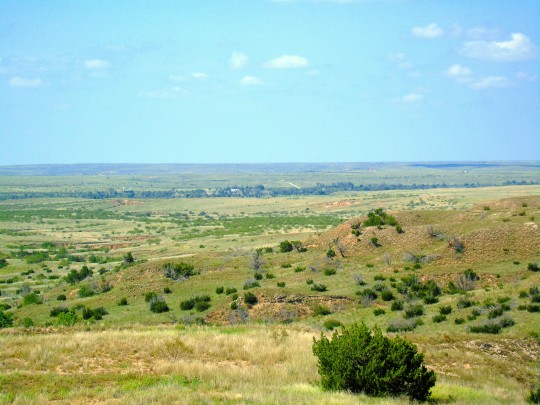

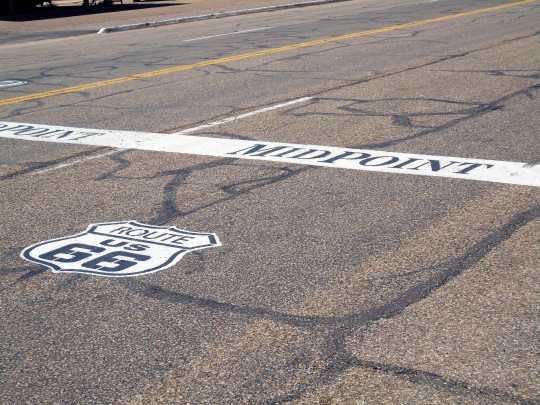

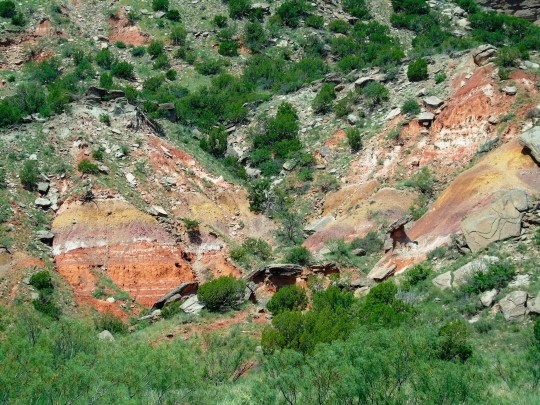


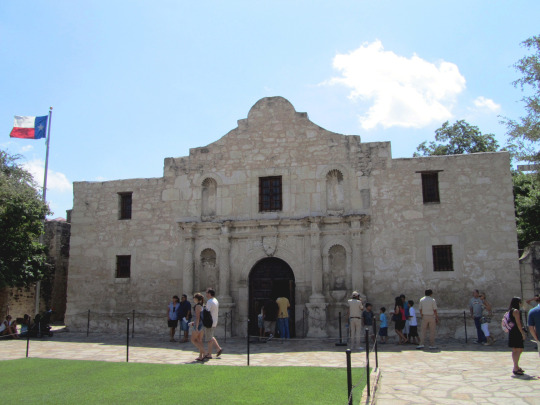
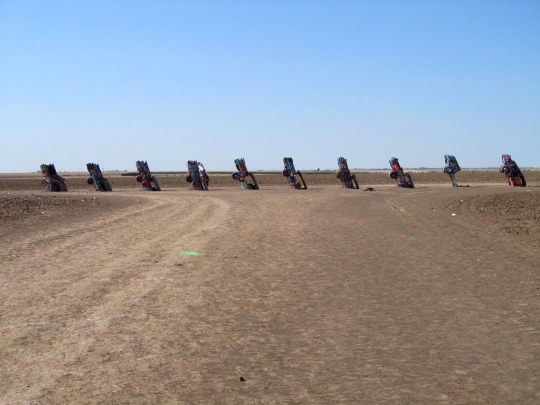
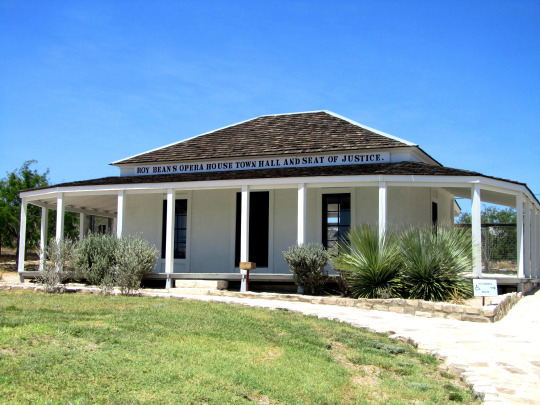


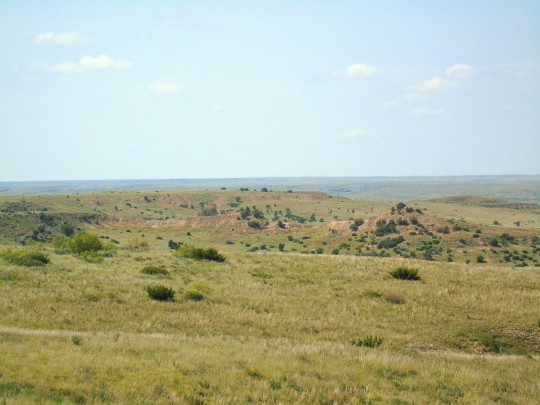

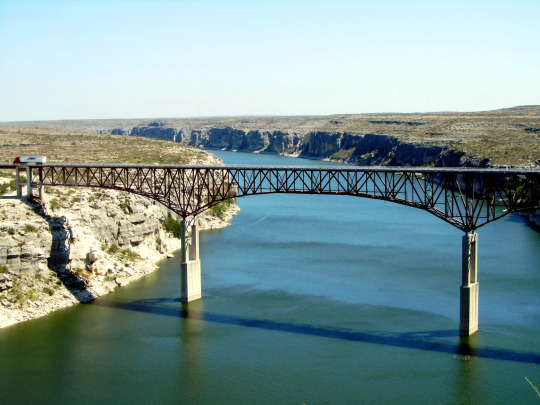

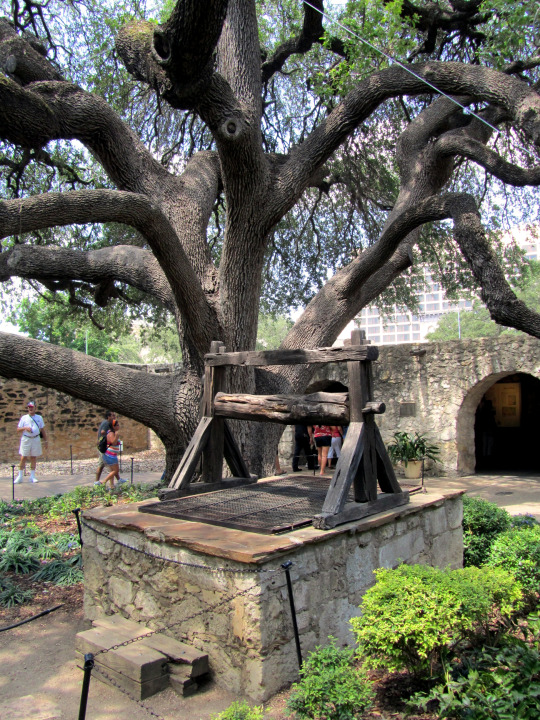

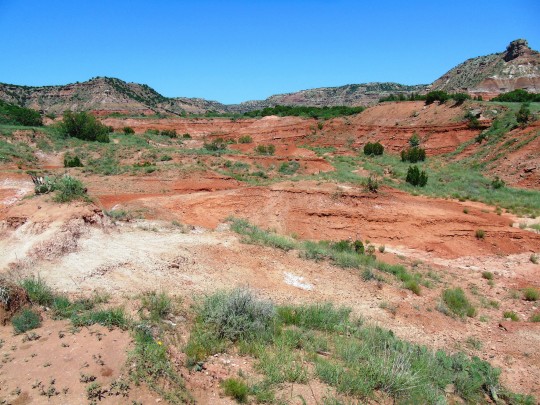


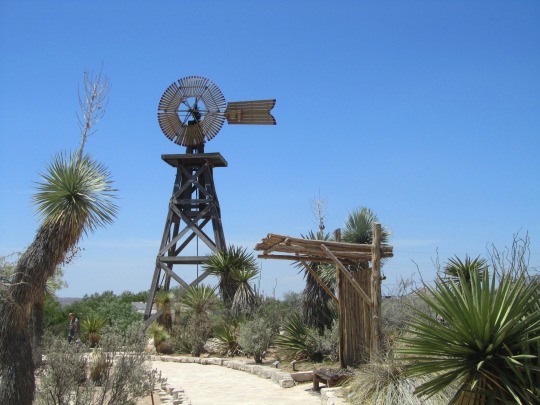



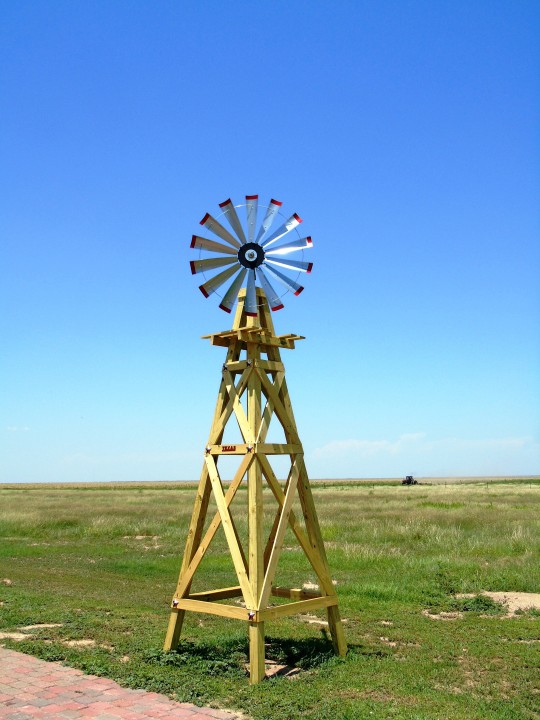

Texas Independence Day
Texas Independence Day on March 2 commemorates the signing of the Texas Declaration of Independence on the same date in 1836. Inhabitants of Texas proclaimed independence from Mexico and established the Republic of Texas with the signing of this declaration by over 59 delegates.
Children’s events, re-enactments, live band music, and cook-offs are all part of the festivities. Storytelling sessions about how Texas gained independence from Mexico and became a republic are among the other activities.
History of Texas Independence Day
A congress of Texians and Tejanos convened at Washington-on-the-Brazos during the Texas Revolution and declared Texas’ independence from Mexico, and they became known as Texans. The delegates elected David Burnet as interim president and confirmed Sam Houston as commander-in-chief of all Texas armies.
In addition, the Texans adopted a constitution that guaranteed the unrestricted practice of slavery, which had previously been banned by Mexican law. In the meantime, in San Antonio, the Alamo was still under siege by Mexican General Antonio de Santa Anna, and the fort’s defenders awaited the last Mexican attack.
Santa Anna ordered his troops to invade the Alamo on March 6. The first and second Mexican charges were defeated by Travis’ artillery, but the Texans were overpowered in less than an hour, and the Alamo was seized. All of the Texan and American defenders were murdered in fierce hand-to-hand combat when Santa Anna instructed that no prisoners should be taken. The Alamo’s only survivors were a small group of civilians, chiefly women and children. During the siege and storming of the Alamo, hundreds of Santa Anna’s soldiers died.
Six weeks later, at San Jacinto, a huge Texan army led by Houston surprised Santa Anna’s forces. The Texans overpowered the Mexicans and took Santa Anna. The dictator was forced to acknowledge Texas’ independence and withdraw his troops south of the Rio Grande. Nine years after the Texas Declaration of Independence was written, the Republic of Texas was annexed to the United States by the collective agreement of the United States Congress.
On December 29, 1845, the United States Congress officially recognized Texas as a member of the Union. Sam Houston Day and Texas Flag Day are also celebrated on March 2, albeit they are not legal holidays.
Texas Independence Day timeline
1835
The Texas Revolution Begins
The revolution begins on October 2 as a rebellion instigated by colonists from the U.S., supported by Tejanos, to oppose Mexico’s centralist government.
1836
The San Jacinto Battle
The Republic of Texas wins its independence on April 21 with victory at the San Jacinto River.
1845
Texas Joins the Union
On December 29, the United States Congress recognizes Texas as a constituent state.
1846
The Mexican-American War Begins
Mexico goes to war with the United States over the Republic of Texas’ annexation.
Texas Independence Day FAQs
How do Texans greet one another?
“Howdy,” the official Texas greeting, is much more than a witty remark voiced by Woody, the “Toy Story” cowboy. True Texans use the word as a popular greeting.
Can Texas leave the U.S. legally?
Texas v. White, a landmark Supreme Court ruling, says that states cannot leave the union by state legislation.
What is the slogan of Texas?
In February 1930, the Texas state motto of friendship was established. The slogan was probably chosen because Texas, or Tejas, was the Spanish translation of the native Indian tribe’s “thecas or teyshas”, which means “friends or allies.”
How to Celebrate Texas Independence Day
Attend a festival: Attend one of the festivals held on Texas Independence Day to celebrate. There are tons of activities for children and adults to have a fun time.
Participate in a reenactment: Join a reenactment of the famous events during the Texas Revolution. Play dress-up and reenact the battle of the Alamo with friends.
Learn more about Texas: Texas has a lot to offer. From excellent barbecues to live music, the Lone Star State has tons of attractions and rich history.
5 Facts About Texas That Will Blow Your Mind
Dr Pepper was made in Texas: Dr Pepper was first publicly introduced in 1904 and is now distributed all over the world; it was invented in 1885 by Charles Alderton in Waco, Texas.
First frozen margarita: Mariano Martinez, a Dallas restaurateur, invented the first frozen margarita machine.
Six flags: Texas’ Six Flags theme park is named after the six countries that have presided over Texas; Mexico, Spain, the U.S., France, the Confederate States of America, and the Republic of Texas.
Powers that be: Texas has an independent power grid, it is separated from the rest of the United States.
Nightcrawlers: Bracken Cave in Texas houses North America’s largest bat colony.
Why We Love Texas Independence Day
It’s a source of inspiration: The story of the Texas Revolution is the perfect example of snatching victory against the odds. The Texans made the impossible a reality when they defeated their Mexican rivals who far outnumbered them.
It’s a crucial page in the history books: The road to independence is a story that will be passed down for generations in Texas. The legendary battles and tales of bravery will be remembered for years to come.
Appreciating the war heroes: Texas Independence Day is an opportunity to honor the sacrifice of those who fought for Texas’ independence. Their names are not forgotten and their deeds remain fresh in the memories of their successors.
Source
#Texas Independence Day#Palo Duro Canyon State Park#2 March 1836#USA#Texas Declaration of Independence#anniversary#Texan history#US history#landscape#countryside#cityscape#architecture#summer 2014#2011#Adrian#Midpoint Route 66#Austin#the Alamo#Texas State Capitol#San Antonio#Cadillac Ranch#Amarillo#Corpus Christi#Gulf of Mexico#Pecos River High Bridge#Langtry#travel#original photography#vacation#tourist attraction
1 note
·
View note